AppDynamics
Follow the steps below to configure a service so as to extract its related alert data from AppDynamics. Squadcast will then process this information to create incidents for this service as per your preferences.
Using AppDynamics as an Alert Source
(1) From the navigation bar on the left, select Services. Pick the applicable Team from the Team-picker on the top. Next, click on Alert Sources for the applicable Service
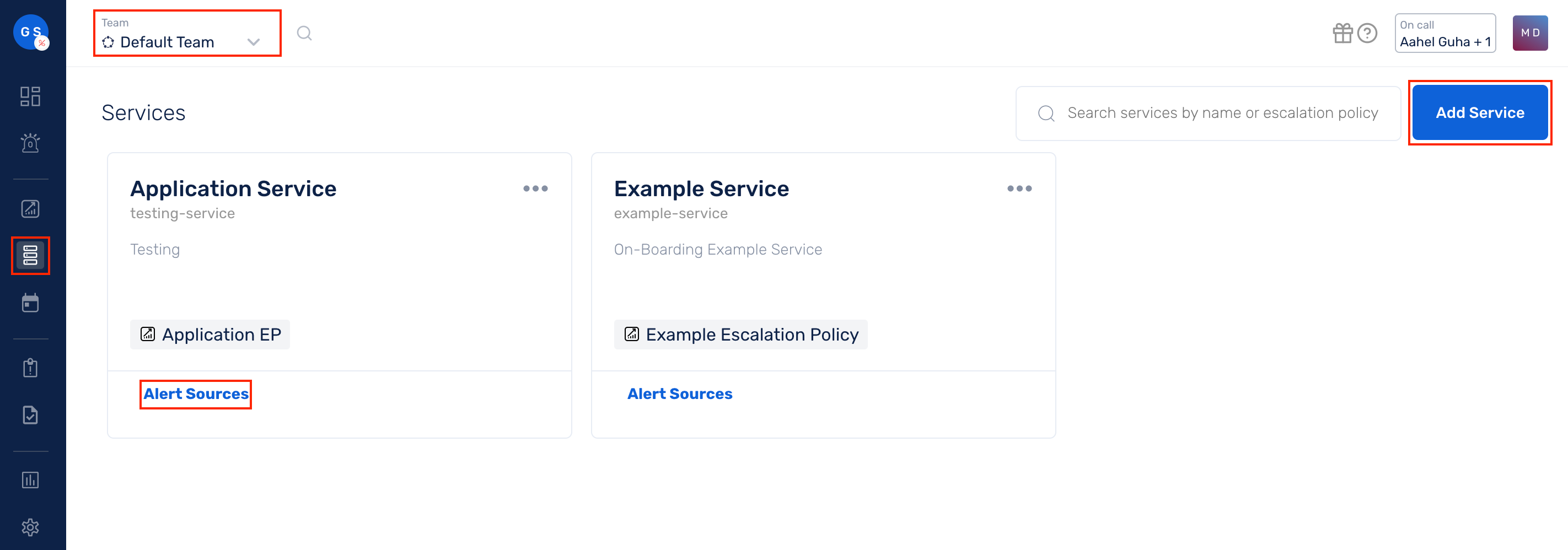
(2) Search for AppDynamics from the Alert Source drop-down and copy the Webhook URL
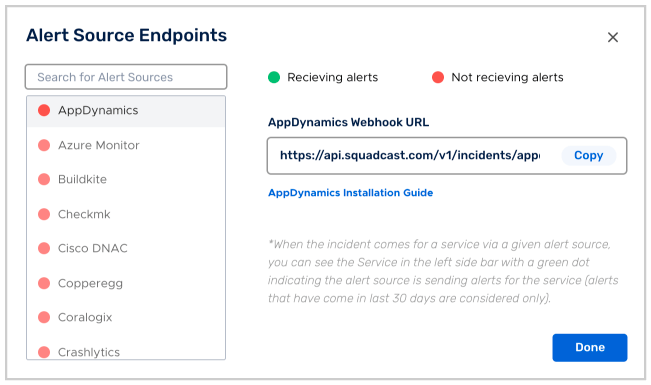
For an Alert Source to turn active (indicated by a green dot - Receiving alerts against the name of the Alert Source in the drop-down), you can either generate a test alert or wait for a real-time alert to be generated by the Alert Source.
An Alert Source is active if there is a recorded incident via that Alert Source for the Service in the last 30 days.
Create a HTTP Request Template in AppDynamics
In AppDynamics dashboard, click on Alert & Respond menu, then select HTTP Request Templates and click the New button.
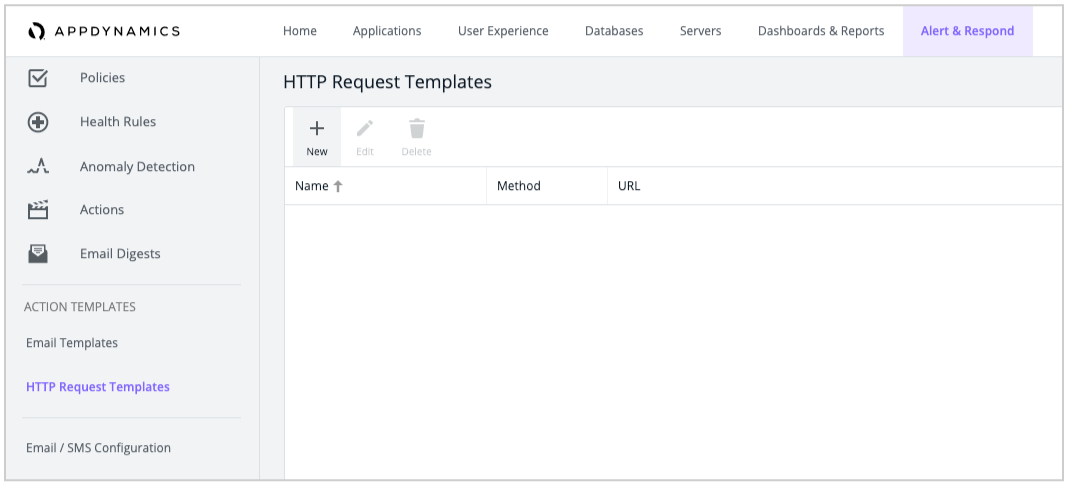
In the Create HTTP Request Template box, enter an appropriate Name such as Squadcast Integration Template and then add a Custom Templating Variable named sc_event_type and the default value as triggered.
In the Request URL section, select the Method as POST and paste the URL you have obtained from the previous section into Raw URL and URL Encoding as UTF-8 and in the Authentication section, select the Type as NONE.
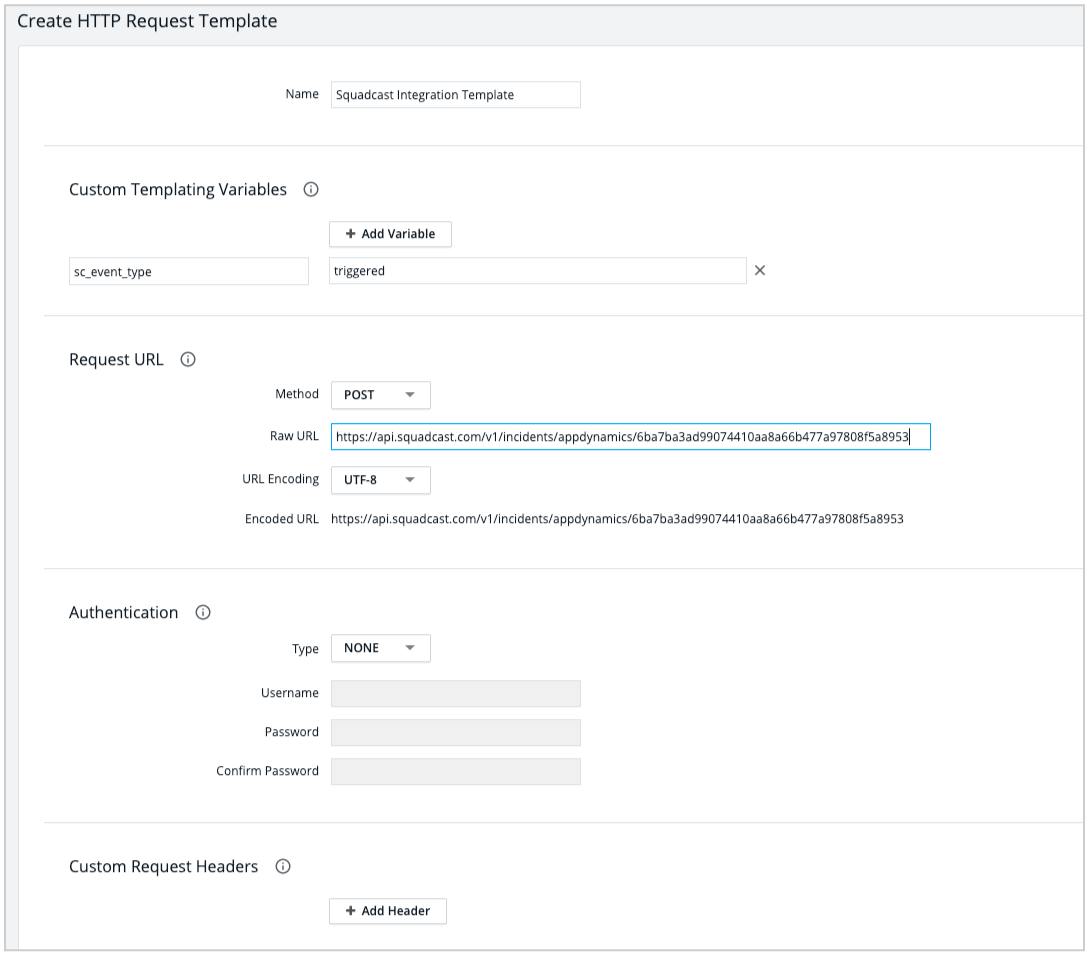
In the Payload section, select the MIME Type as application/json and Payload Encoding as UTF-8 and in the payload body, paste the below JSON.
{
"incident_key": "${latestEvent.node.name} - ${latestEvent.application.name}",
"event_type": "${sc_event_type}",
"description": "${latestEvent.displayName} on ${latestEvent.node.name}",
"client": "AppDynamics",
"client_url": "${controllerUrl}",
"details": {
"event_name": "${latestEvent.displayName}",
"summary": "${latestEvent.summaryMessage}",
"event_id": "${latestEvent.id}",
"guid": "${latestEvent.guid}",
"event_time": "${latestEvent.eventTime}",
"event_type": "${latestEvent.eventType}",
"event_type_key": "${latestEvent.eventTypeKey}",
"application_name": "${latestEvent.application.name}",
"node_name": "${latestEvent.node.name}",
"message": "${latestEvent.eventMessage}",
"severity": "${latestEvent.severity}"
},
"contexts":[
{
"type": "image",
"src": "${latestEvent.severityImage.deepLink}",
"alt": "${latestEvent.severity}"
},
{
"type": "link",
"href": "${latestEvent.deepLink}",
"text": "View this transaction in AppDynamics"
}
]
}
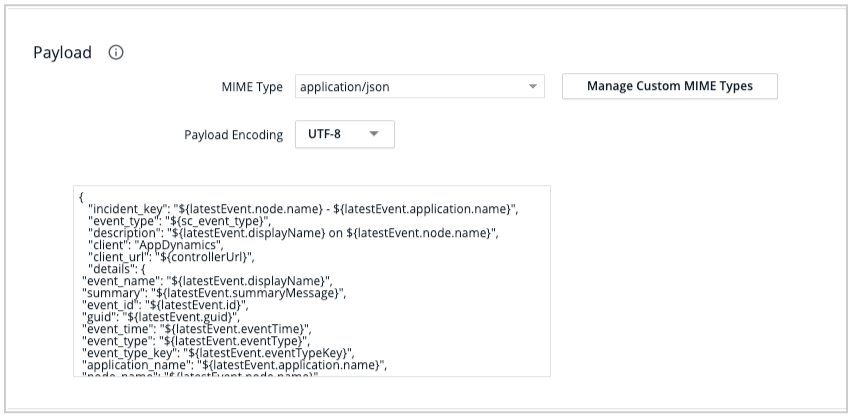
In the Response Handling Criteria section, click on Add Success Criteria button and select the Status Code as 200 and check the Expect Payload checkbox and select the Content Type as application / json
In the Settings section, check the One Request Per Event checkbox and click the Save button.
Create Trigger and Resolve Actions in AppDynamics
Go to Actions and then create a New Action, and then in the Create Action box, select Make an HTTP Request radio button and select OK.
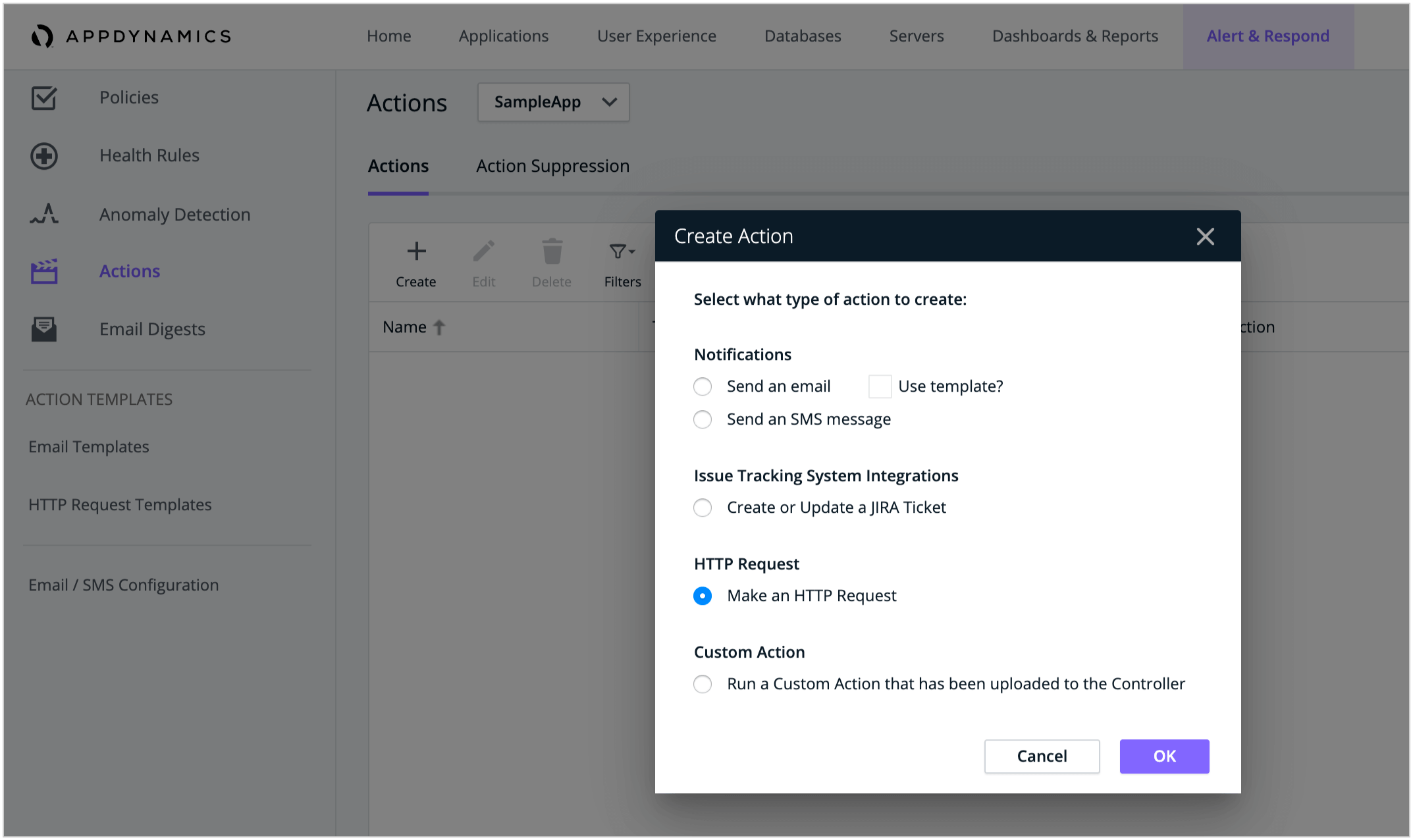
In the Create HTTP Action box, enter the name as Squadcast - Triggered and select the HTTP Request Template which we have saved earlier as Squadcast Integration Template and click the Save button.
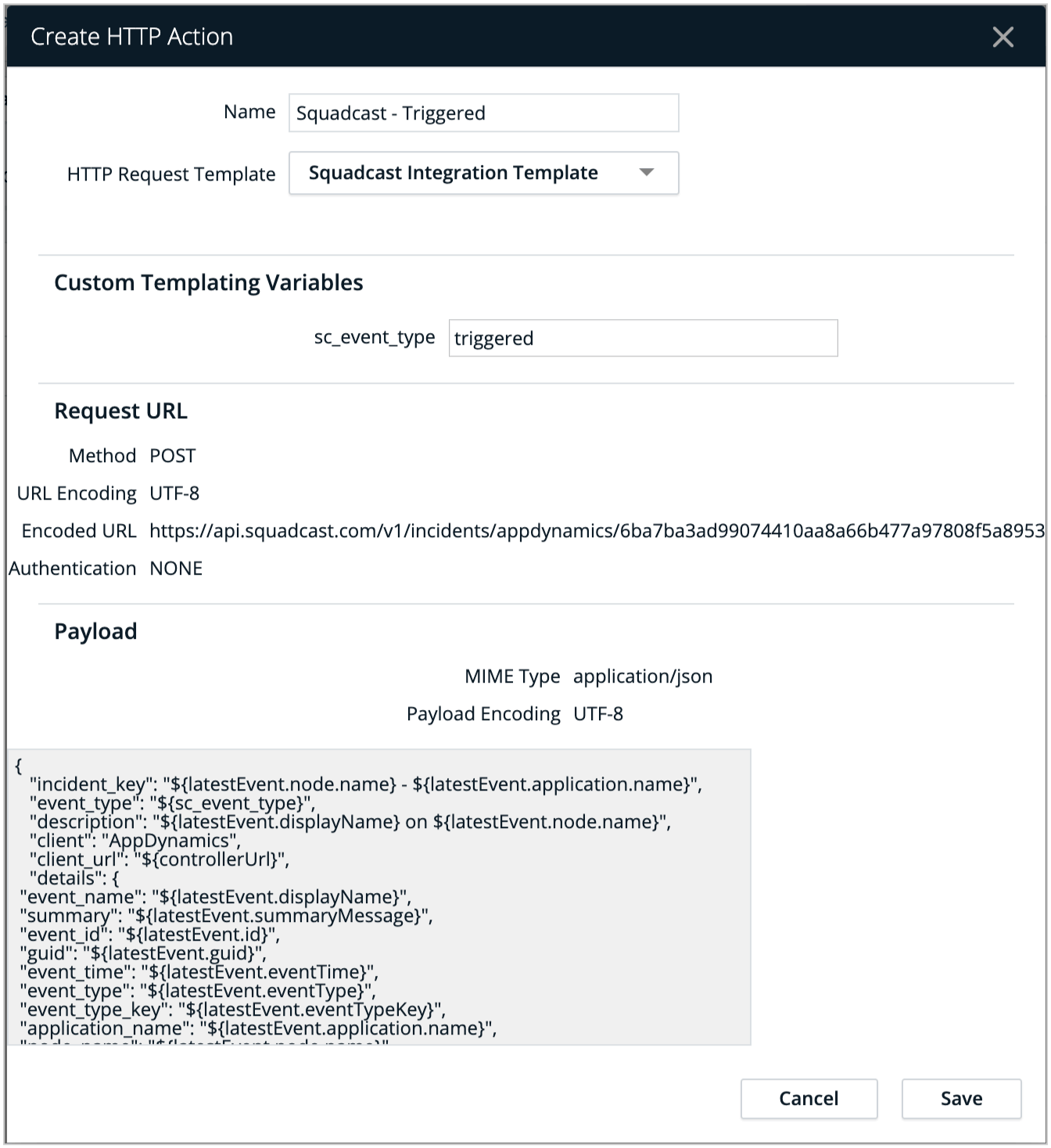
Create one more action with name as Squadcast - Resolved and select the same HTTP Template and change the value of sc_event_type to resolved and click on the Save button.
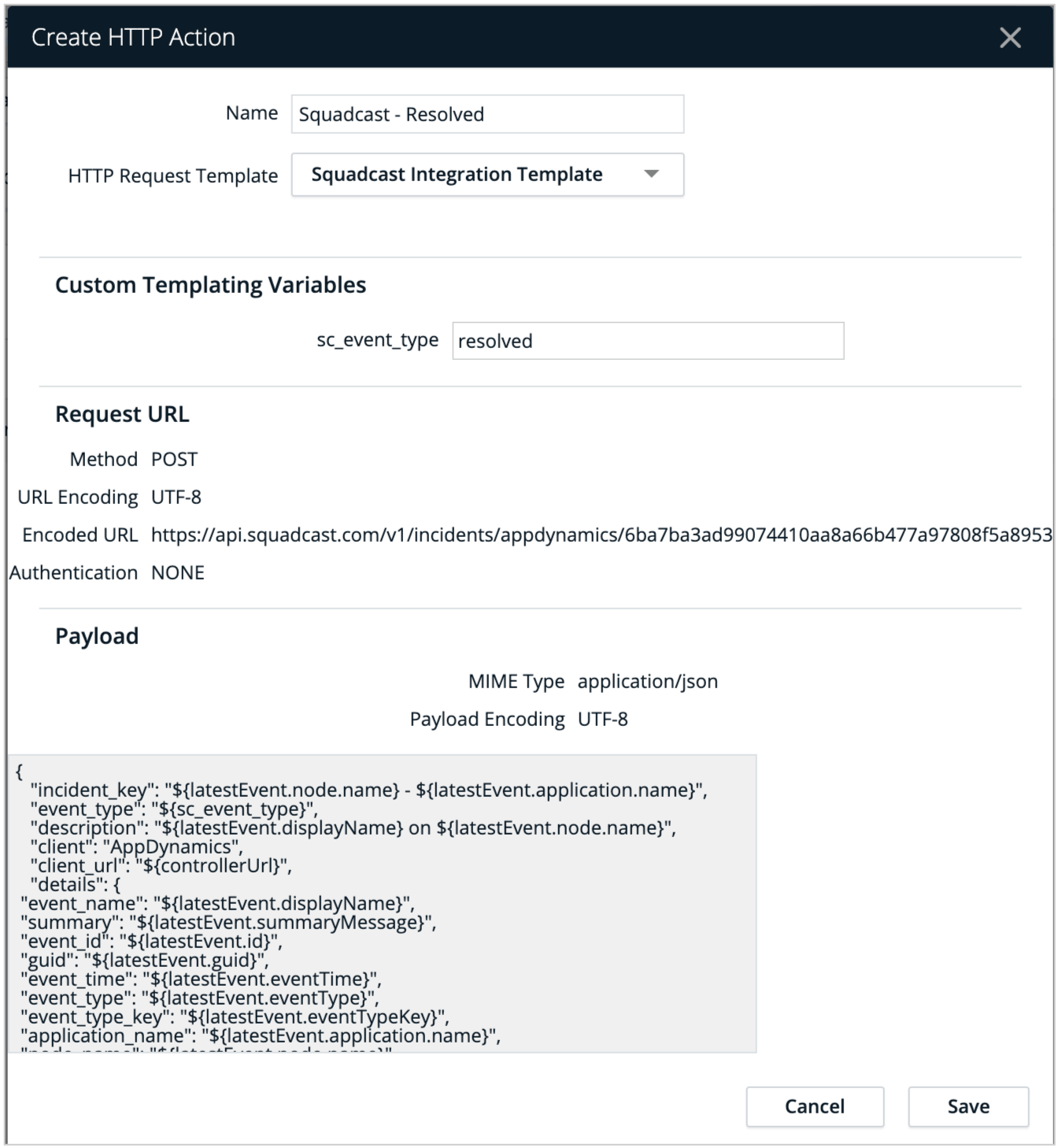
Assign Actions to Policies
Now you have to setup policies and assign actions to them such that when those alerts are fired, the corresponding action will be initiated.
Ideally assign the Squadcast - Triggered action to all Critical or Warning events which has started and assign the Squadcast - Resolved action to all Critical or Warning events which was cancelled or ended, so that the incidents can be Auto-Resolved in Squadcast when those events end.
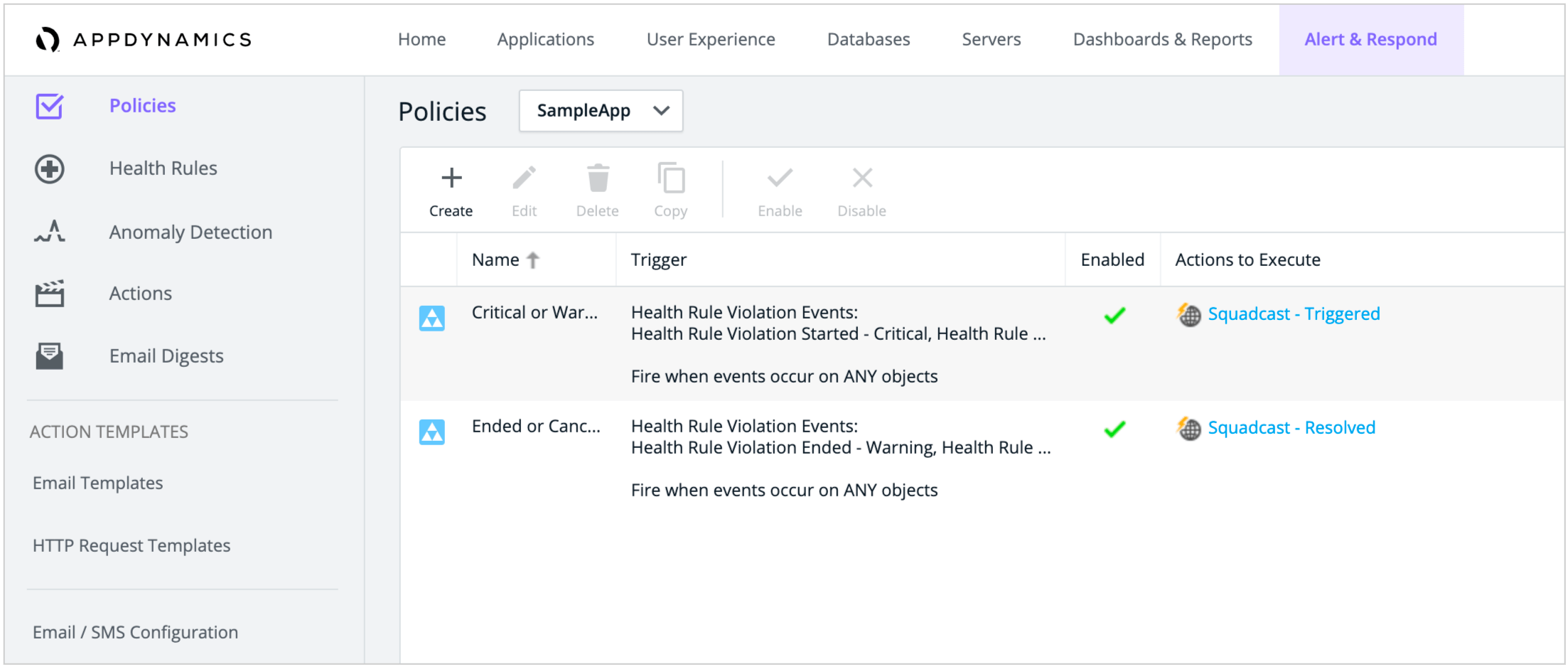
That’s it! Now you AppDynamics integration is good to go and incidents will be created and resolved in Squadcast based on your AppDynamics policies.